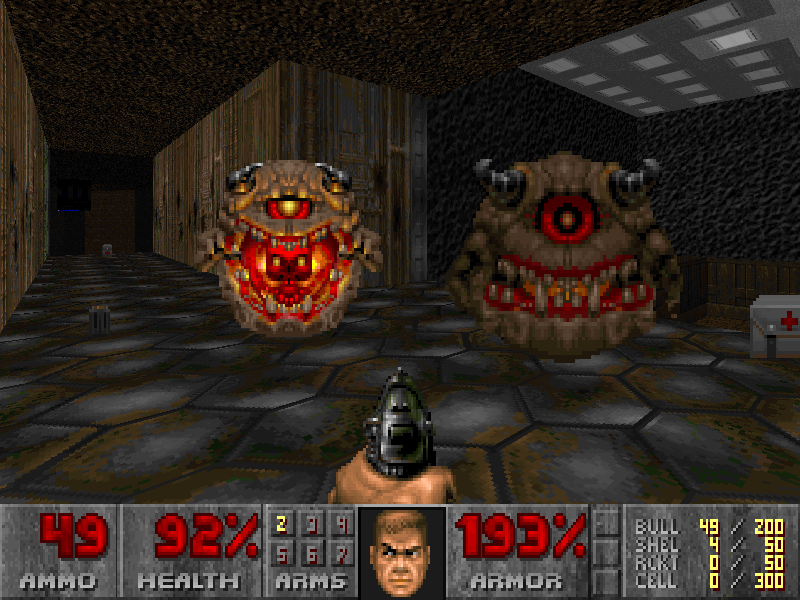 Wanna live dangerously? Play a PC game from 1990-1995 that has “2” in the title.
Wanna live dangerously? Play a PC game from 1990-1995 that has “2” in the title.
Companies used to have almost no idea of what a sequel to a computer game should look like. Should they be like level packs? Should they be entirely new games? The “shareware” model further complicated things – you’d have part 1, the free version, and parts 2 and 3, which you paid for. Publishers were cutting up and slicing games like lunatic sushi chefs, and “sequel” could mean absolutely anything.
Doom 2 was part of the problem. It has 32 new levels, one new weapon, and a few new enemies. Do you call that a sequel? I call it a glorified level pack. Some accountancy particulars set Doom 2 apart from the original (chiefly the fact that it was sold in stores rather than through mail-order), but so what? Imagine if Street Fighter II was Street Fighter I with a new character and some new backgrounds. You’d call shenanigans.
The new weapon is the super shotgun. It’s very satisfying to clear a room of zombies in one blast, but it disrupts the balance of the game. It’s just too effective – you never again use the regular shotgun, so why still have it in the game? (Yes, the shotgun has a tighter spread and is better for long-range fighting, but the chaingun’s better in that category).
The new enemies are a little mixed. The pain elementals and revenants are just tedious and annoying, no fun to fight. The chaingun zombies are neat. The arch-vile is the most inspired creation: a “healer” that can revive dead enemies. All the old enemies are back, including a fair few cyberdemons. At one point you have to face a cyberdemon and mastermind at the same time (the battle becomes anticlimactic when you realise you can trick them into killing each other).
The new levels are the meat of the game. Most of them are either designed by Romero or Peterson. Romero’s levels are aesthetically beautiful, and actually evoke the feeling that you’re in hell. Peterson’s are ugly, slapdash, and gimmicky. The contrasting approach to level design gives the game a bipolar feel – Romero actually gets what Doom’s about (bringing the atmosphere of a Cronenberg film to your computer screen), while Peterson is intent on dragging id Software back to the arcades.
There’s not much to say about Doom 2. If you liked the original game, this has more of the same. But it doesn’t push the envelope. The envelope remains super-glued to the table. If you’re new to the series, you might as well start with Doom 2. Once you have the super shotgun, it’s awfully hard to play a game without it.
But normally the genre-defining classics and the cheap cash-ins are made by different people. Who would have thought that in this case they’d be coming from the same studio?
No Comments »
Comments are moderated and may take up to 24 hours to appear.
No comments yet.
